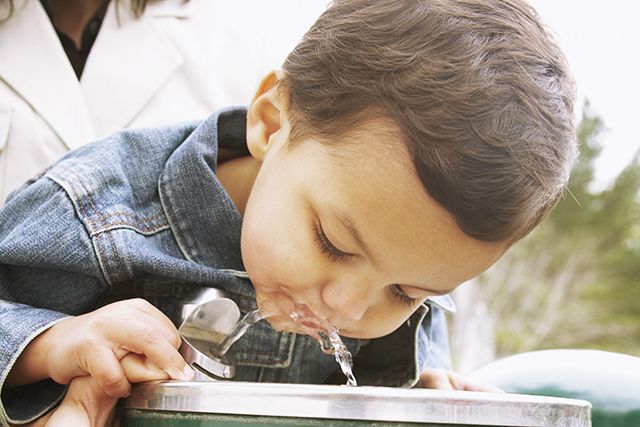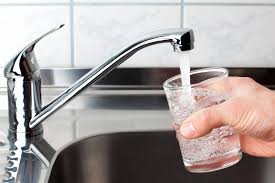Water Quality
The United States has one of the safest water supplies in the world. If you are among the 286 million Americans that get their water from a community water system , your tap water is regulated by the United States Environmental Protection Agency (EPA).
Drinking water varies from place to place, depending on the condition of the source water from which it is drawn and the treatment it receives, but it must meet EPA regulations.
Even though our tap water supplies are considered to be one of the safest in the world, water contamination can still occur. There are many sources of contamination, including:
- Sewage releases
- Naturally occurring chemicals and minerals (for example, arsenic, radon, uranium)
- Local land use practices (for example, fertilizers, pesticides, livestock, concentrated feeding operations)
- Manufacturing processes (for example, heavy metals, cyanide)
- Malfunctioning on-site wastewater treatment systems (for example, septic systems)
In addition, drinking water that is not properly treated or which travels through an improperly maintained distribution system (for example, the piping system) may also create an environment for contamination.
The presence of certain contaminants in our water can lead to health issues, including gastrointestinal illness, reproductive problems, and neurological disorders. Infants, young children, pregnant women, the elderly, and immunocompromised persons may be especially susceptible to illness.

How is water regulated?
It’s regulated by different agencies, with different missions. The U.S. Environmental Protection Agency oversees the quality of water that comes out of your tap, while the U.S. Food and Drug Administration is responsible for ensuring the safety and truthful labeling of bottled water sold nationally. States are responsible for regulating water that is both packaged and sold within its borders (which is most of the bottled-water market), but one in five states doesn’t even bother.
It’s important to note that the federal government does not require bottled water to be safer than tap. In fact, just the opposite is true in many cases. Tap water in most big cities must be disinfected, filtered to remove pathogens, and tested for cryptosporidium and giardia viruses. Bottled water does not have to be.
Both kinds of water are tested regularly for bacteria and most synthetic organic chemicals, but city tap is typically assessed much more frequently. For example, bottled-water plants must test for coliform bacteria just once a week; city tap needs to be tested 100 or more times a month.
Limits on chemical pollution for both categories are almost identical. The one place where bottled water might have the edge is in the case of lead; because many older homes have lead pipes, the EPA standard for tap water is less strict—one-third of the FDA’s standard for lead in bottled water.

What should I do before I take a water sample?
Before you take a sample, call the laboratories listed in Table 2 to obtain sampling bottles and information on the correct sampling procedure. Please note that your sample will not provide you with accurate information unless the:
- correct sample bottles are used
- correct volume is taken
- sample is stored at the required temperature
- sample is transported to and arrives at the laboratory in the correct time
- correct procedure is used to take the sample.

Water Quality: Is Tap Water Safe?
You need to stay hydrated — that’s clear — but is the tap water in your home safe? It is considered generally safe if it comes from a public water system in the United States, such as one run and maintained by a municipality. The Environmental Protection Agency (EPA) has the authority to monitor all public water systems and sets enforceable health standards regarding the contaminants in drinking water.
When drinking water leaves a treatment plant on its way to your house, it must meet strict safety standards. That doesn’t mean that your water is free of all contaminants, but that the levels of any contaminants don’t pose any serious health risk.
Of course, accidents can happen. If the water supply becomes contaminated by something that can cause immediate illness, the supplier must promptly inform you. Suppliers also need to offer alternative suggestions for safe drinking water. In addition, they have 24 hours to inform customers of any violation of standards that could have major impact on health following a short-term exposure.
Check With Your Water Company
You know that bill you pay every month, or every quarter, for your drinking water? It’s the first stepping-stone on your search. Every year, your water agency is required by the United States Environmental Protection Agency to supply you with a Consumer Confidence Report, which is an annual water quality report that details any and all contaminants that may be present in your water and alerts you to the health risks they pose.
Every water agency has to provide this report to its customers by July 1 each year. Typically, it comes with your bill, or if you pay online, you should get an alert to a downloadable PDF. You can also go directly to your water utility’s website; the latest report should be posted there. (You may have to do some digging.) If you don’t know the name of your water agency, you can use the EPA’s clickable map to find it, but you’ll have to wade through a cumbersome alphabetical list of agencies. More detailed information on how to get your CCR is available from the EPA.